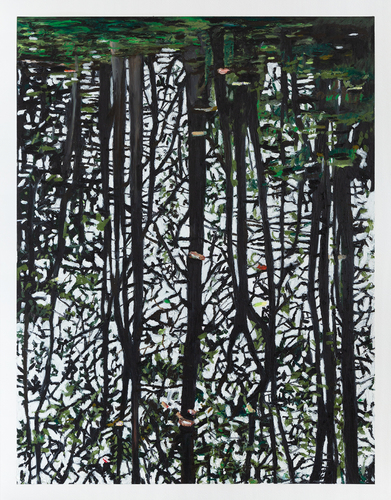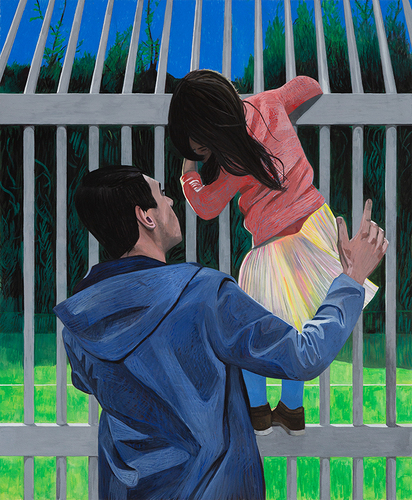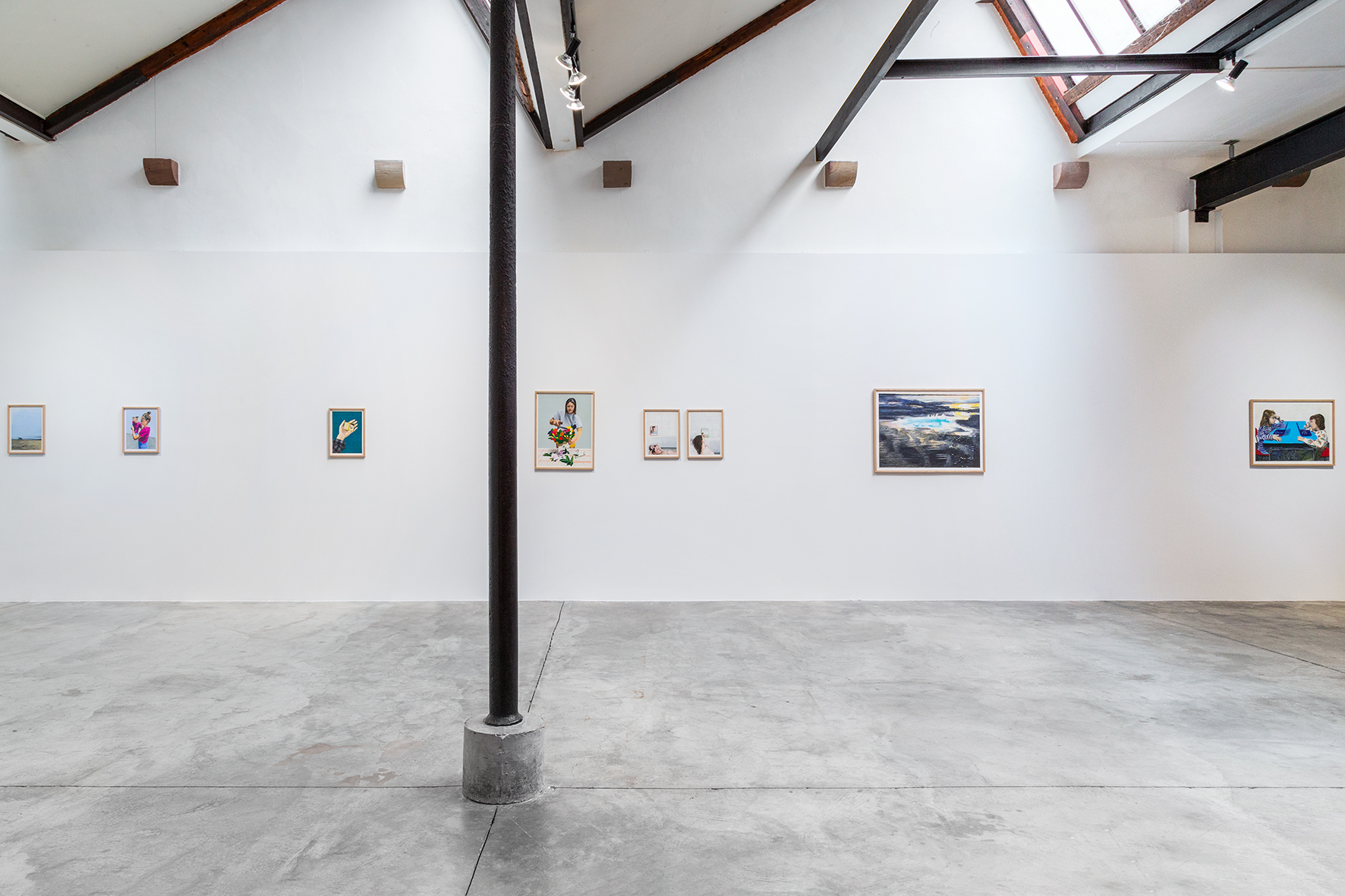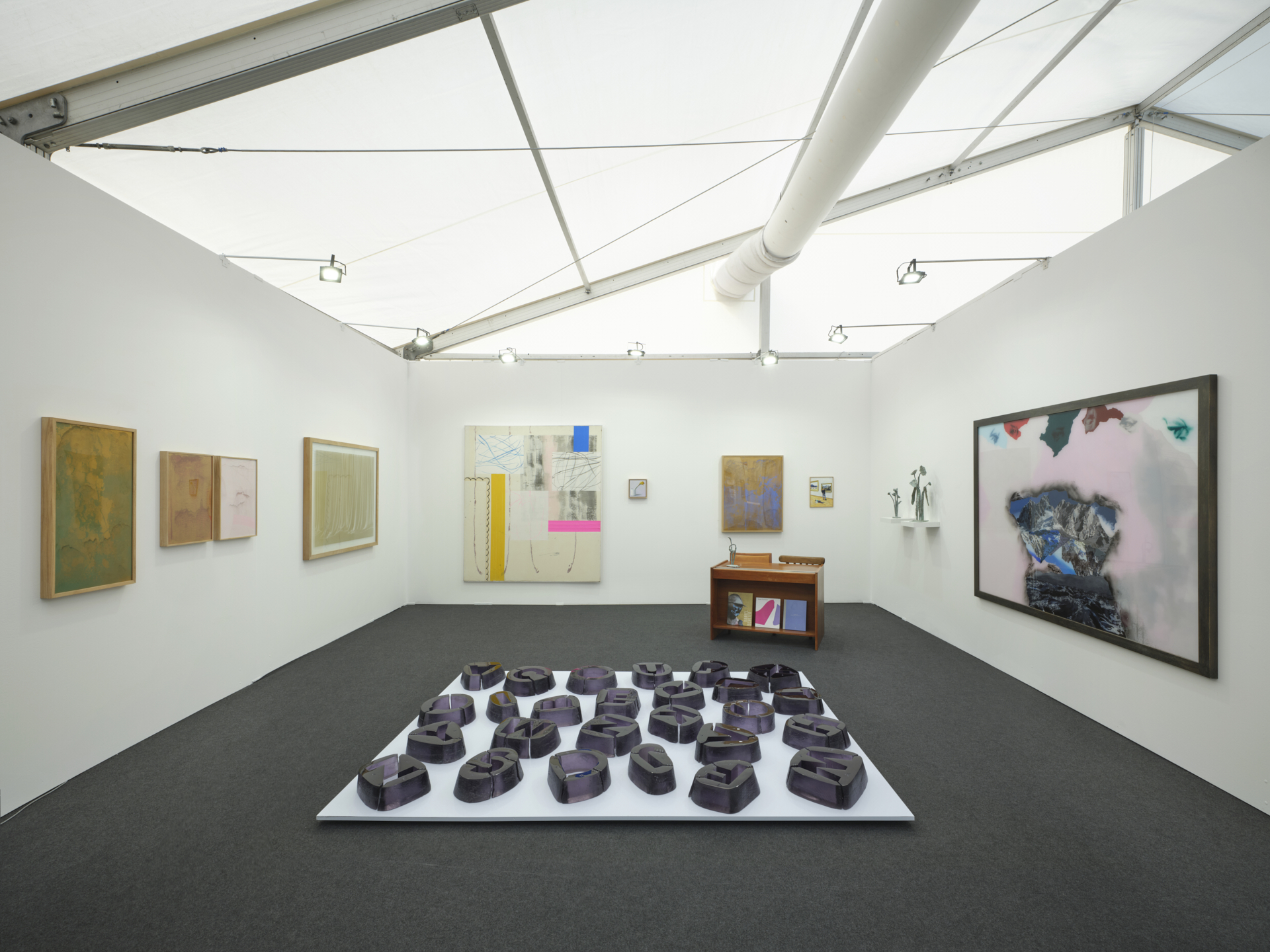Camille Brès lives and works in Strasbourg. In 2011, she graduated from the Haute Ecole des Arts du Rhin with honors and was awarded the Prix Pflimlin. Numerous group and solo exhibitions in France, Switzerland and Luxembourg have been devoted to her work. The Rhineland Academy of Arts also awarded her a prize in 2015.
Her everyday life is one of her favorite subjects: she interprets it through oil painting on canvas, gouache on paper, pastel or watercolor, and through portraits or self-portraits. People close to Camille Brès, such as her young son, or familiar environments, such as her studio, are recurring subjects in her paintings.
Camille Brès' canvases, with their vibrant color palette and studied composition, based on mirror plays and framing effects, give the familiar an intimate, poetic depth. However, while Camille Brès' work feeds on what is close to her, it is not autobiographical: the staging of her models and subjects produces a detachment, a tension, even, contributing to the enigmatic aura that emanates from many of her works.
For Camille Brès, color is radical and has a structuring function.The bold flat tones and the spatial complexity of her geometric compositions create a false impression of flatness while building a resolutely graphic scene, whose rigidity evokes Flemish primitivism. There is something theatrical and melancholic about the presence or absence of the human figure in Camille Brès's paintings, which is also reminiscent of the strangeness of Vilhelm Hammershoi's work or the impression of suspended time in Edward Hopper's work. The theatricality of Camille Brès' work lies in the fact that objects and figures become respectively props and actors, allowing several layers of narrative to unfold.
"Every painter paints himself": if the formula comes from the end of the Quattrocento, it could still apply, in this case, to the portraitist dimension of Camille Brès' work, where her models embody relay-figures and so many possibilities of transfer through which the artist tells us about her painting and herself as a painter. Camille Brès often resorts to pictorial mise en abîme, summoning up the works of masters such as Grünenwald (Sur le motif, 2023), Gauguin or Picasso (La salle d'attente, 2017), multiplying over-framing effects with the presence of windows, mirrors or screens whose reflections compose another image within the image.
Camille Brès is a painter of everyday life, her own, which inevitably becomes ours, so much so that, despite its personal dimension, her sense of subject allows the appropriation of her works. And yet, even though they are so rooted in her everyday life, there is something timeless about Camille Brès' painting that evokes a memory or a dream. This tension, nourished by palettes that are sometimes almost saturated, the sharp contours, geometric cut-outs and a treatment of space freely inspired by the perspective in the paintings of Renaissance artists, makes Camille Brès' work a familiar enigma with evocative power.












